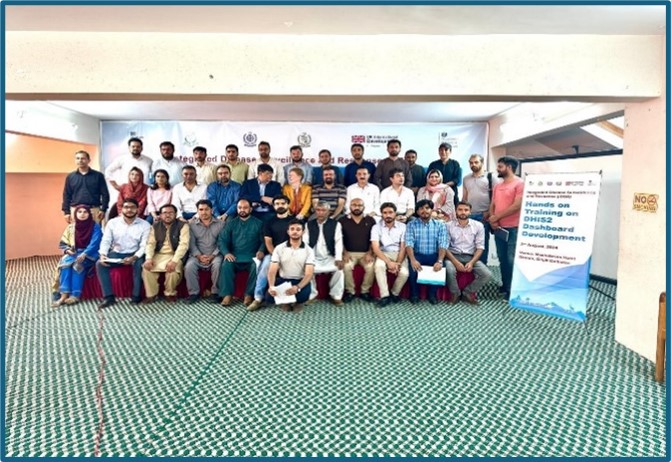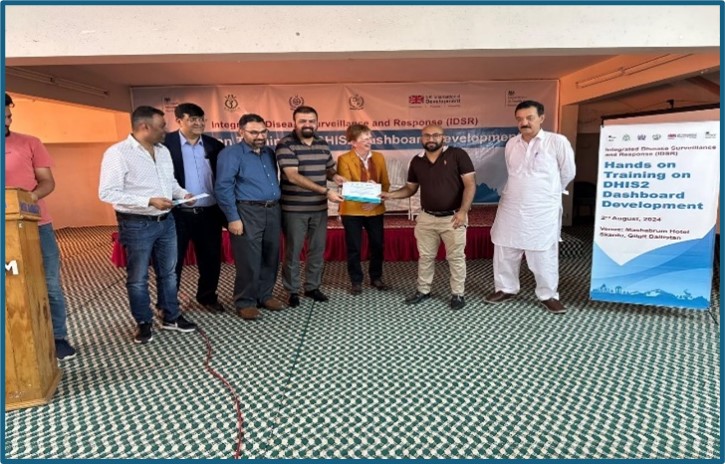
Integrated Disease Surveillance and Response (IDSR) system was initiated in Pakistan with a pilot in selected districts of provinces and regions. The Gilgit-Baltistan (GB) region is among the pioneers, having volunteered for IDSR implementation in two districts during the pilot phase. GB is a border region, has hard to reach areas with difficult terrain, extreme weather conditions in addition to resource and socio-demographic challenges. Implementing IDSR here successfully highlights the relentless efforts and most importantly commitment from all stakeholders.
The United Kingdom Health Security Agency (UKHSA) International Health Regulations Strengthening Project (IHR-SP) initiated the IDSR quarterly review meeting as an integral part of implementation to monitor and evaluate progress. These reviews also help to identify challenges and obstacles and recommend remedial actions.
On 1 August 2024, UKHSA IHR-SP in collaboration with the National Institute of Health (NIH) and the GB Health Department convened the IDSR quarterly review meeting. A total of 44 health officials, including District Health Officers (DHOs), health facility in-charges, data entry operators, epidemiologists, program leads and senior officials from health and planning department participated. The DHOs presented IDSR progress, disease trends, response activities, reporting compliance, challenges and suggestions for improvement in their respective districts. The key recommendation was to strengthen the response component of IDSR and development of district specific epidemiological bulletin.

Picture 1: Group photo Head of IHR-SP UKHSA along with national and regional stakeholders
District Dashboard Data Analytics review workshop, Gilgit-Baltistan August 2024
Analysis and information sharing is a sub-indicator for IHR technical area of surveillance. The 2023 Joint External Evaluation (JEE) found that Pakistan had developed capacity for this indicator but it needed to be expanded at all levels. During the JEE this capacity was available at national and provincial level whilst districts were not able to visualise and analyse their data before dissemination. The IHR-SP commenced district IDSR dashboard development and data analytics trainings across the country to strengthen the district health authorities on data visualisation and analytics at source. As a result, district-specific weekly epidemiological bulletins were generated for wider dissemination to multiple stakeholders and policy makers for evidence-based decision making for a targeted and timely response.

Picture 2: Head of IHR-SP UKHSA Dr Anne Wilson awarding certificate to best performing district on data analytics
Twenty-six participants from all districts including data managers, computer operators and senior officials from regional and federal health departments participated. During the session, district representatives gave presentations using the IDSR dashboard showing trends, pattern, and time, place, person analysis, burden of priority diseases and response activities. The meeting aimed to highlight best practices, identify challenges/ barriers and actions for improvement in their districts. Attendees agreed that government ownership was required to ensure sustainability through continued collaboration on capacity building and system strengthening.